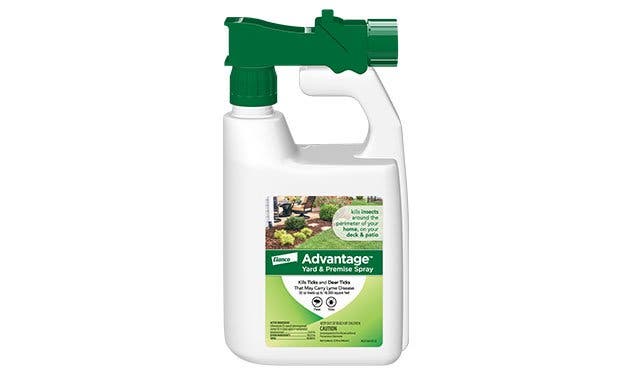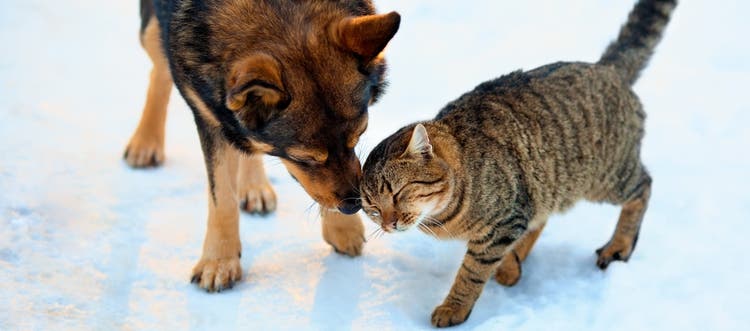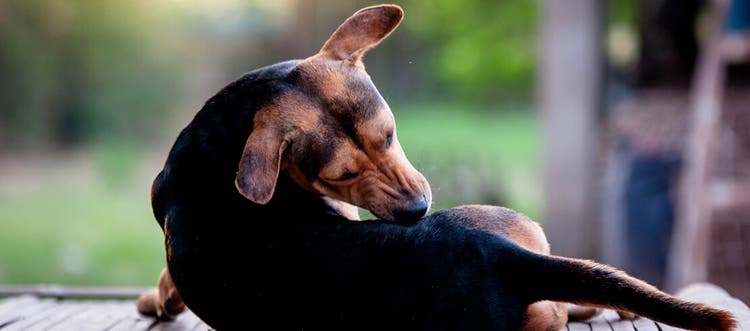What to know about fleas and humans.
If your dog or cat has fleas, one of your first thoughts might be, “Can dog and cat fleas live on humans, too?” Read on to learn how fleas can affect humans.
Can Fleas Live on Humans?
The short answer is that fleas may bite people, but they won’t live on you. Fleas will seek out your dog or cat as their preferred host.
If you see fleas in your pet’s fur, it’s only natural to wonder if fleas can live in human hair, too. The good news is that scientific research shows that humans’ relatively hairless bodies don’t make great hiding places for fleas. People are difficult for fleas to attach to and don’t provide enough heat for them to breed or survive long term. So, if you’re the only food source around, fleas are unable to complete their life cycle and multiply. The dark, moist environment of a dog’s or cat’s fur, however, makes a great place for fleas to live and breed.
Keep in mind that fleas will often stay on our skin and inside our clothes in the short term, using us as a “carrier” while waiting for a more suitable host, like your cat or dog. Fleas can also infest our homes by laying their eggs on your pet, which fall into the environment, onto furniture and on the carpet; these eggs can lay dormant before hatching into larvae and developing into adult fleas.
Is There Such a Thing as a Human Flea?
Yes, but don’t worry: There are nearly 2,000 kinds of fleas and luckily, only one type, the human flea Pulex irritans, lives on people; it’s rarely a problem in the U.S.
Two specific flea species most commonly live and feed on cats and dogs: Ctenocephalides felis, or cat fleas, and Ctenocephalides canis, the scientific name for dog fleas. Surprisingly, the most common flea found on dogs and cats is the cat flea. That’s because fleas are not host-specific — while their preferred host is a cat or dog, they will happily feed on either cats or dogs, and sometimes even humans!
What Do Flea Bites on Humans Look Like?
To help you find out whether that itchy red spot you’ve found on your skin is just a spot, a bug bite or something more sinister, here are some ways flea bites appear on humans:
- A small scab on your skin that has a light red “halo”
- Very small red marks around a central red spot
- Clusters of red bite marks that have swollen in a similar way to mosquito bites
- Bites on your ankles and legs, in particular
Other signs your household has fleas:
- Have you found black specks that look like ground pepper? This is called flea dirt, or flea feces, and is one sign of a flea infestation.
- Your pets are scratching more than usual or showing other signs of flea bites.
Still not sure? Red, itchy bites on your body could mean bedbugs rather than fleas.
Learn more about bedbug bites versus flea bites in our handy guide.
Can Humans Catch Diseases from Fleas?
Fleas don’t just bite; infected fleas can also spread diseases to humans, called zoonosis.
Flea-borne Diseases
Ignoring a flea infestation can risk your family’s health. Even if you get over the discomfort of irritating bites, infected fleas can spread disease such as typhus and the plague, although these are very rare in the U.S. It’s more common that a person may contract Bartonella, often known as cat scratch disease, from infected flea feces under a cat’s claws.
Allergic Reactions to Flea Bites
Some people may have an allergic reaction to flea bites; their skin can become swollen, itchy and irritated, sometimes displaying red bumps, hives or a rash. If this happens, it’s best to visit a healthcare professional.
Risk of Tapeworm Infection
Fleas can carry the tapeworm parasite and can pose a risk to your household. If a flea carrying the Dipylidium caninum tapeworm is ingested by your pet during grooming or by humans accidentally (although this is rare), it can develop into a tapeworm infestation.
Learn more about the dangers flea bites pose to both pets and humans.
How Do I Get Rid of Fleas?
If you’ve got a flea infestation on your hands, it’s important to treat your pets, house and yard to help remove any hidden flea eggs and larvae that have the potential to re-infest it.
If fleas are bothering you and your family, follow these tips:
- Never use pet flea products on humans. Flea products for your pets should only be used on your pets — they can make humans sick.
- Soothe the itch. The biggest complaint people have from fleas is the itchy bites. To get relief, talk to your pharmacist about over-the-counter options.
- Avoid scratching. As hard as it might be, try to avoid scratching the bite. Scratching flea bites can lead to scabs opening, longer healing times and increased risk of infection.
Of course, it’s important to help get rid of the fleas on your cat or dog using flea treatment products. Treating your pet regularly with a flea preventative is one of the most effective ways to prevent a flea infestation in the first place. There are a number of options for flea prevention and treatment depending on your pet’s needs.
Whenever you’re treating your pet for fleas, also consider flea control in your home. Fleas love warm, hidden places, making carpets, furniture and other soft furnishings the perfect habitat for their larvae and flea eggs. Regular vacuuming and use of a household flea treatment spray can help rid your home of fleas.
If your pet goes outside, be sure to address any fleas hiding in your yard, too. Most flea infestations start outdoors, so it’s important to help prevent fleas from thriving in your yard.
It can take several weeks to fully tackle a flea infestation, but as long as you’re patient and consistent, you’ll get there. To prevent re-infestation, it’s important to treat your pets for fleas regularly

Seresto® Flea & Tick Collar for Dogs
An easy-to-use, odorless, non-greasy collar that kills and repels fleas and ticks for 8 continuous months.

Advantage® XD (spinetoram)
Kills fleas for two months with one dose, outlasting the typical six-week flea life cycle — and the monthly competition.

Advantage® Yard & Premise Spray
Kills fleas, ticks and other insects in your yard and around the perimeter of your home. Not for use on pets. Use as directed.






